These French crullers are light and airy donuts fried to crisp, golden brown perfection, glazed in a sweet, crackly glaze.
Jump to:
What is a French Cruller?
A French cruller is a light and airy doughnut made from pâte à choux dough rather than the regular yeasted dough or cake batter.
Choux dough is made from simple ingredients like milk, flour, butter, and eggs. It is then usually piped and baked as cream puffs or eclairs. In this case, the choux dough is piped out and deep-fried.
As choux pastry dough cooks it releases steam, causing it to puff up and become nice and airy. This is what gives profiteroles their characteristic round-puffed shape, and gives French crullers their light and airy texture.
Good French crullers should be soft and airy on the inside with a golden brown and crispy crust that can absorb the delicious vanilla glaze. They are a lot lighter than a traditional donut which makes them unique and absolutely delicious!

Tips on frying the perfect cruller
Dry out your dough
When making choux dough one of the most important things is drying out the dough. The amount of moisture in the dough is key to whether the dough rises or doesn't.
If the dough is too wet it won't have enough structure to rise as it fries, resulting in a doughy/gummy donut.
The drying of the dough happens after you add the flour. At this stage, the dough is called a 'panade'. To dry out the panade press the dough to the bottom of the pan and listen carefully. Once you hear the dough start to crackle give the pan a shake. If you notice a thin film on the bottom of the pan it's ready to be taken off the heat.
Cool the dough
When the dough has dried out it will still be very warm. It's important to let this cool before adding the eggs. If you add the eggs before the dough has cooled your risk cooking your eggs.
I like to transfer it to a large bowl and give it a vigorous mix. This will release any built-up steam while helping it cool faster.
Your dough passes the V test
Make sure you check the consistency of your batter as you add your eggs to the dough. Not all eggs weigh the same and depending on how well you dried out your batter you could need more or less.
I like to beat my eggs in a separate bowl and slowly stream it into the dough, mixing well in between each addition. You can check whether the dough is ready or not by mixing the dough and lifting up your spatula. If the dough forms a "V" shape as it hangs off the spatula then it's at the perfect consistency.
If the batter falls off the spatula too much egg has been added.

Chill your dough
Giving your dough time to chill after it's been made gives the batter time to firm up. This makes it easier to pipe out into perfect cruller shapes. I like to use a pastry bag fitted with a large star tip for the prettiest shape.
Chilling the dough also helps to prevent the crullers from splitting as they fry.
Cut your parchment paper into squares
The trick to easy frying is cutting out parchment paper squares. Then pipe your circle of dough onto these pre-cut parchment squares. This makes it super easy to fry as you just pop the whole assemble, baking paper, and all into the hot oil.
Fry at the right temperature
The key to getting that perfectly puffed shape and golden brown color is in the frying.
If the oil is too cold the donut will absorb too much oil as it fries, becoming dense, gummy, and oily. If the oil is too hot it'll fry the exterior too fast. While the cruller might look done the inside will still be raw.
I highly recommend using a thermometer to check the temperature of the oil before frying. This ensures that the donuts will turn out perfectly.
If you don't have a thermometer you can check the temperature with a piece of white bread. If the bread bubbles and starts to turn a light golden color once it hits the oil, the oil is hot enough.
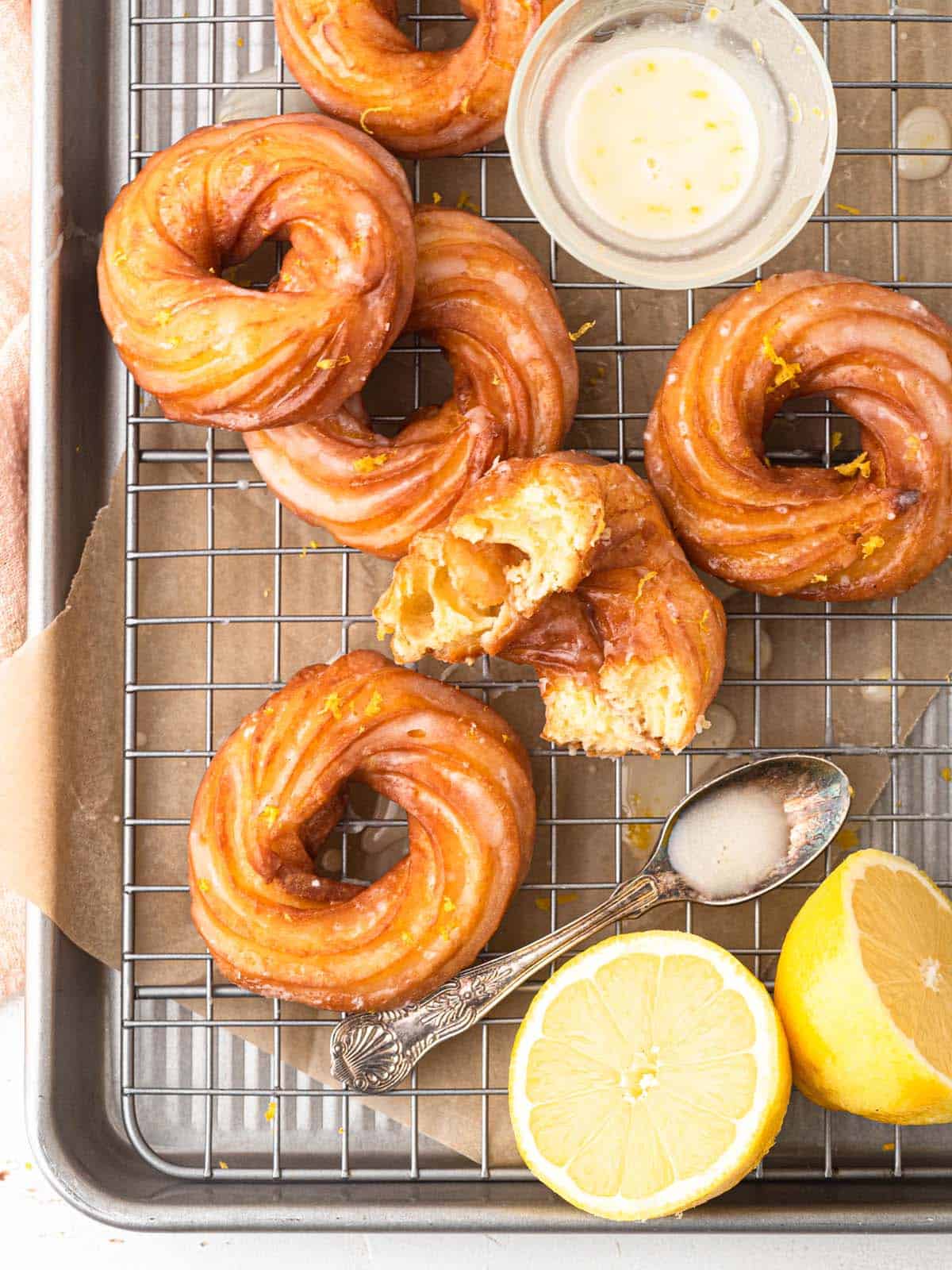
Ingredients
Cruller Batter
- Milk: Milk and water make up the moisture of the dough. Milk gives the dough a richer flavor, make sure you use whole milk!
- Water: Water makes up the other portion of the moisture. While milk adds flavor water gives the exterior that crispness.
- Unsalted butter: Butter is the source of fat in the dough, giving it that rich and buttery flavor and tender texture.
- Salt: Salt helps to balance out the flavor of the dough.
- Granulated sugar: Sugar gives the dough a touch of sweetness for a good balance of flavor
- All-purpose flour: Flour makes up the body of the donut
- Large eggs: The eggs help make the structure of the donut, allowing it to puff up and become nice and airy
Donut Glaze
- Lemon zest: Lemon zest gives the glaze a little bit of extra flavor and zing. Feel free to leave it out if you aren't a fan of lemon.
- Whole milk: Milk helps to thin out the powdered sugar. If you find that the glaze is too thick to dip your donuts in feel free to add another splash of milk. Keep in mind that a little goes a long way.
- Powdered sugar: Aka icing sugar or confectioners sugar. We need this kind of super-fine sugar as it dissolves quickly forming the perfect glaze.
- Vanilla extract: Vanilla extract gives the glaze a vanilla flavor of course! You can leave it out if you aren't a fan, or change it up for a different extract of your choice.
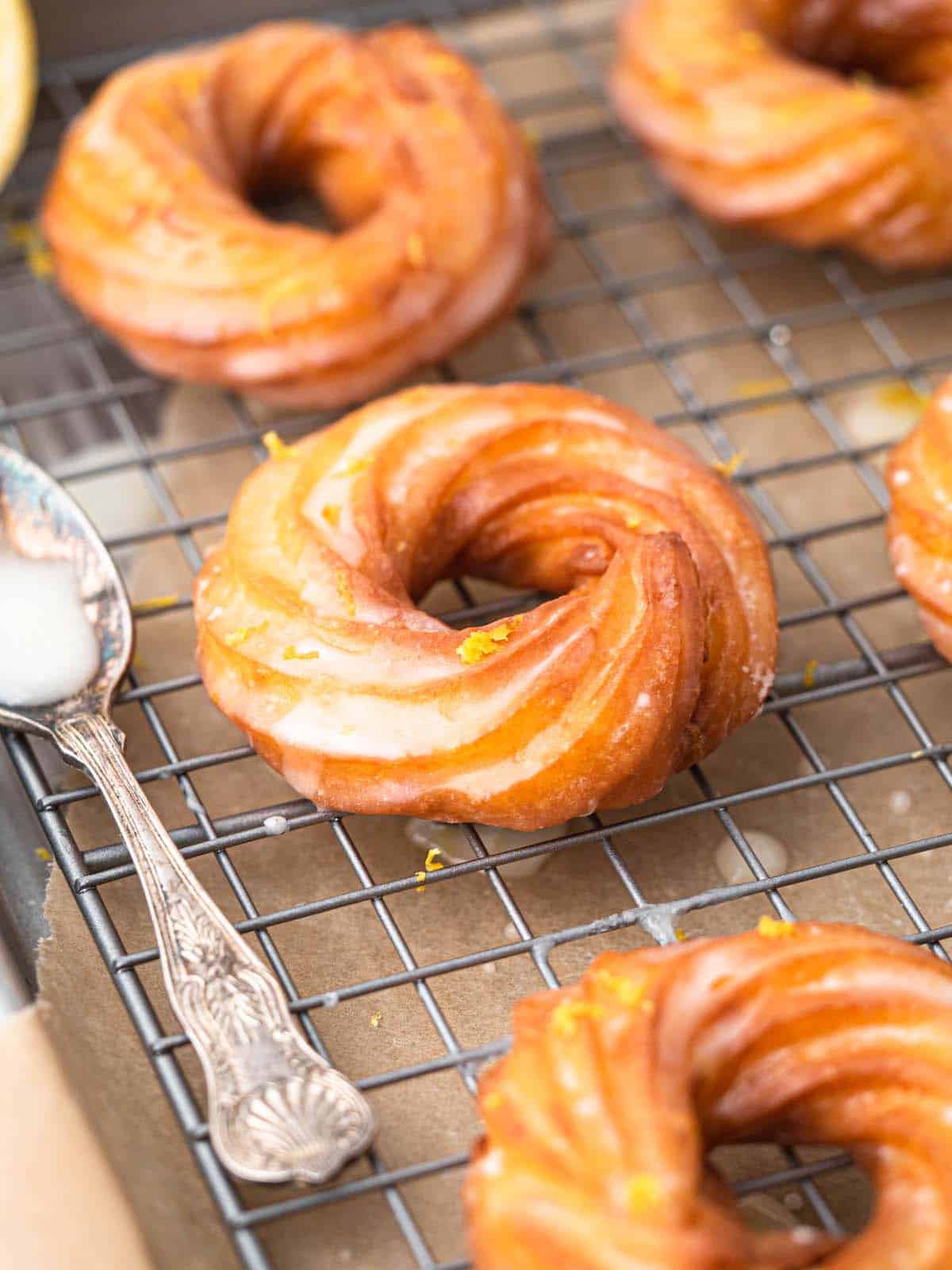
Frequently Asked Questions
How long do these last?
French crullers are best eaten the day they're made, even better when they are freshly fried and still crisp and slightly warm. After a day they tend to get soft and soggy.
If you are eating these the next day you can heat them up lightly in a toaster oven or air fryer. This will bring back that slightly crispy edge.
Can I make these in advance?
I wouldn't recommend frying the donuts in advance, but you can make the batter the day before. Then when you're ready to fry the donuts simply pipe out the batter and fry!
You can even make the batter, pipe it out and freeze them. Then when you are ready to fry allow them to sit at room temperature to defrost before frying.
Why is my dough so runny?
There are a couple of reasons why your dough might be runny:
- The dough wasn't dried out enough
- Too much egg was added
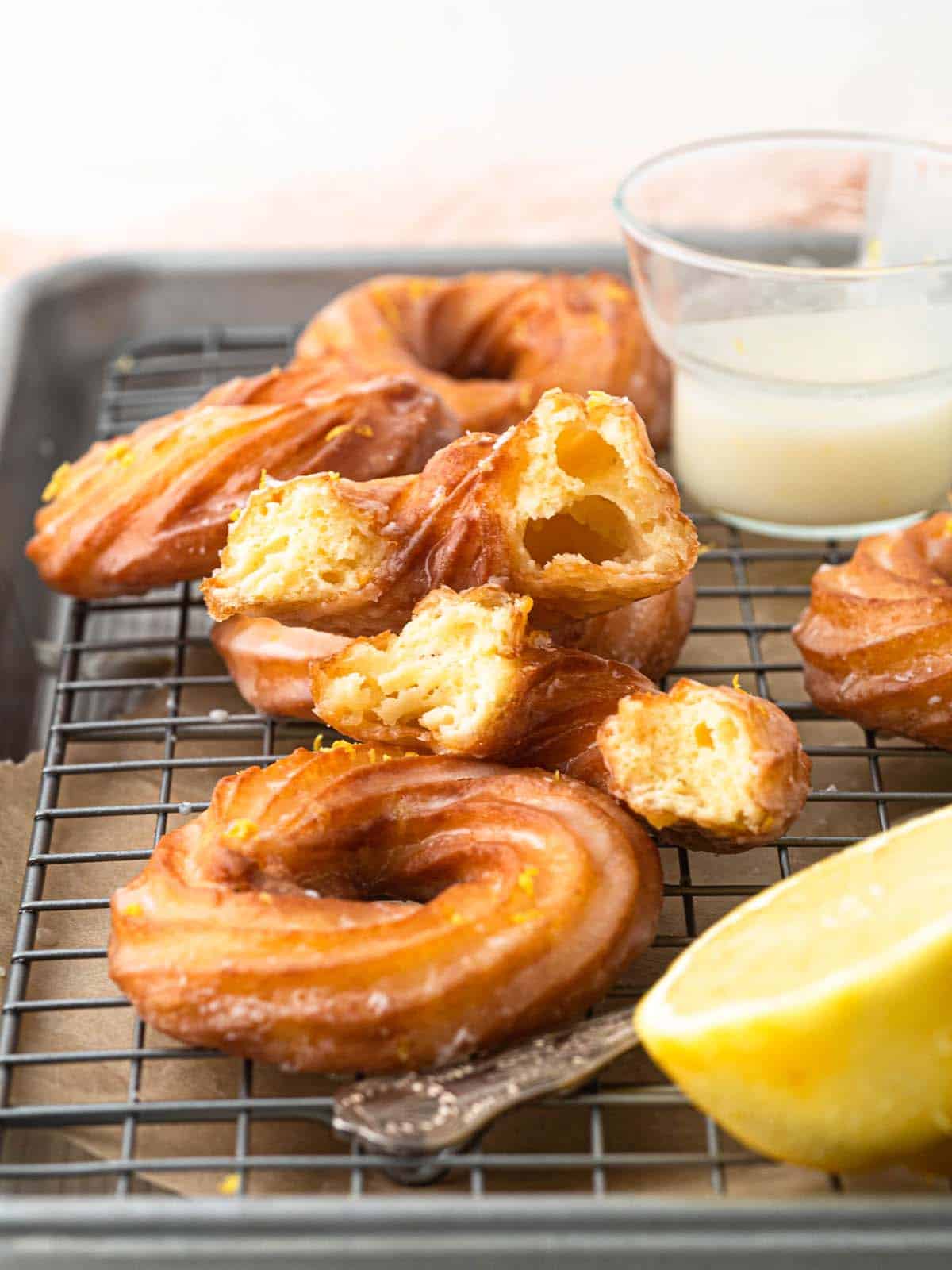
Why did my French crullers split as they fried?
The main reason why crullers split when being fried is that the dough wasn't chilled for long enough.
It can also occur if you aren't using enough oil to fry them. Once they catch on the bottom of the pan they will split.
Why did my crullers collapse after frying?
The biggest reason behind crullers collapsing is that the dough was undercooked and not fried the whole way through.
If you want foolproof crullers you can make them with bread flour rather than all-purpose. This gives the dough extra strength and structure.
Why are my donuts so greasy?
There are a few reasons why your donuts are greasy:
- The oil temperature was too low, causing the donuts to absorb oil as they fry
- The donuts weren't drained properly
Draining your cruller donuts properly is one of the easiest ways to prevent greasy donuts. All you need to do is remove the donuts from the oil with a slotted spoon or a pair of metal tongs, and place them on a wire cooling rack or paper towel to remove any excess oil.

Let's Get Baking
Need a fix for your French cruller donut cravings?! These are surprisingly easy to make and they taste even better when they are freshly fried.
If you liked this recipe make sure to leave me a comment and rating down below, I would love to know how you went.
Also, don't forget to tag me on Instagram @catherine.desserts and hashtag #cattycakes so I can see and share your desserts. Follow me on Facebook, Pinterest, Youtube, and TikTok for more of my baking creations and updates! Until next time... happy caking!
Print📖 Recipe
French Crullers
These French crullers are light and airy donuts fried to crisp, golden brown perfection, glazed in a sweet, crackly glaze.
- Prep Time: 15 minutes
- Cook Time: 15 minutes
- Total Time: 30 minutes
- Yield: 6 Donuts 1x
- Category: Donut
- Method: Easy
- Cuisine: French
Ingredients
Cruller Batter
- 60ml Milk (½ cup)
- 60ml Water (½ cup)
- 60g Butter (¼ cup)
- Pinch of salt
- 2 tsp Granulated sugar
- 60g All-purpose flour (½ cup)
- 2 large eggs, beaten
Donut Glaze
- Lemon zest
- 2 tbsp Whole milk
- 100g Powdered sugar (1 cup)
- 1 tsp Vanilla extract
Instructions
- Combine the milk, water, butter, sugar and salt in a small saucepan over medium heat and bring to the boil
- Remove from the heat and add the flour all at once, mix vigorously until completely combined (it should become a thick paste)
- Return to the heat and press the dough to the bottom of the pan, once you hear the dough crackling and a thin film has formed on the bottom of the pan remove it from the heat
- Transfer the dough to a large bowl and mix to release any steam and cool it down
- After the dough has cooled add in the beaten eggs, mixing until is smooth and shiny
- Cover with cling wrap and chill for 1 hour, or until completely chilled
- Cut 9 small squares of baking paper approximately 4 inches/10cm in size
- Once the dough has chilled fit a piping bag with a large star nozzle and pipe a 3-inch/7.5cm circle onto each square
- Fill a large heavy-bottomed pan with vegetable oil and heat it until it reaches 350F/180C
- Lower the donuts into the oil, removing the parchment paper after 30 seconds or so
- Fry each side for 2-3 minutes or until golden brown
- Remove from the oil and drain on a wire rack
Donut Glaze
- Sift the powdered sugar into a medium-sized bowl
- Add the milk, vanilla extract and lemon zest
- whisk until smooth
- Dip the warm donuts into the glaze and place on the wire rack to drain and set
- Enjoy!

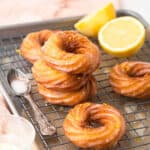
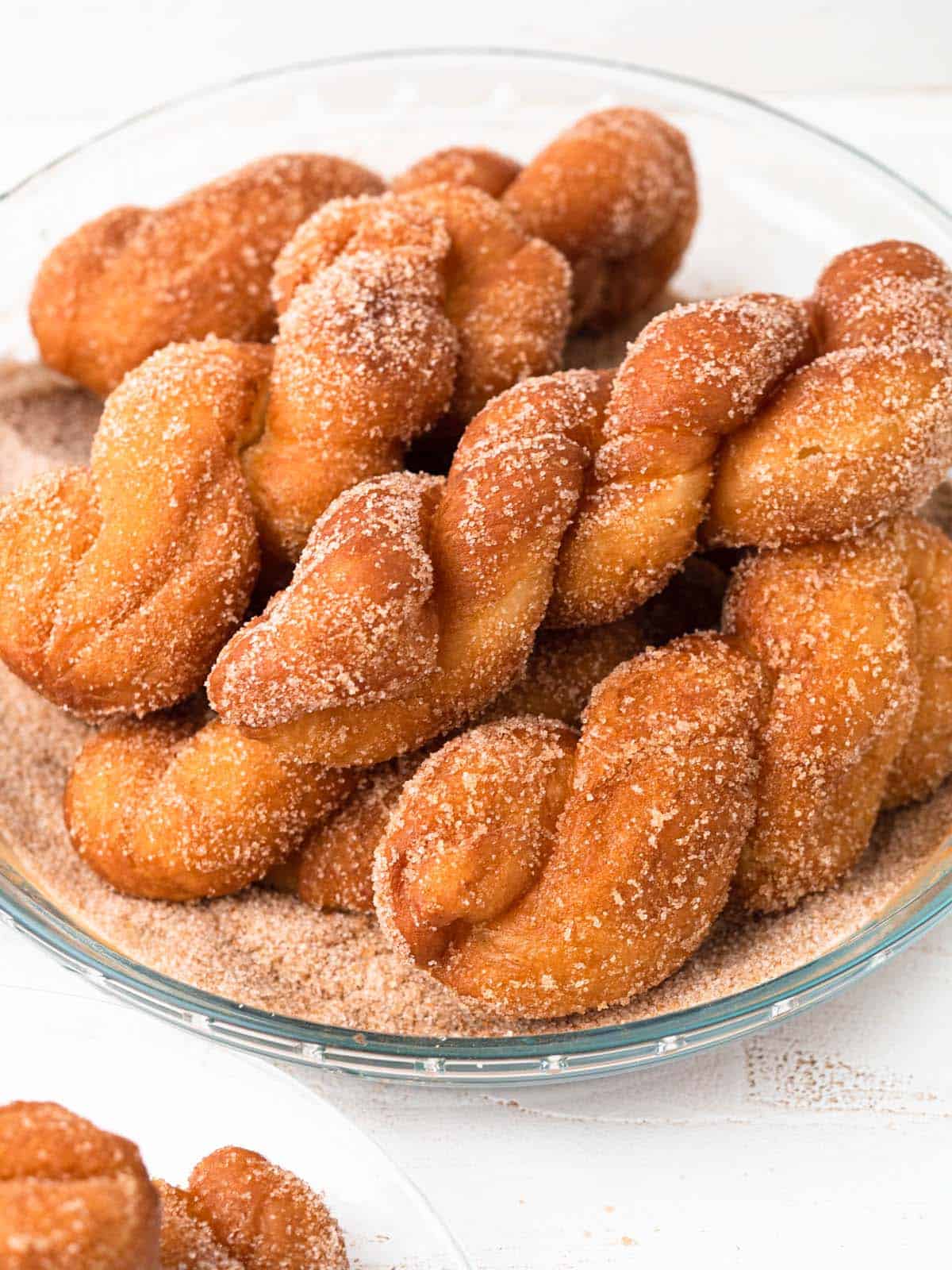
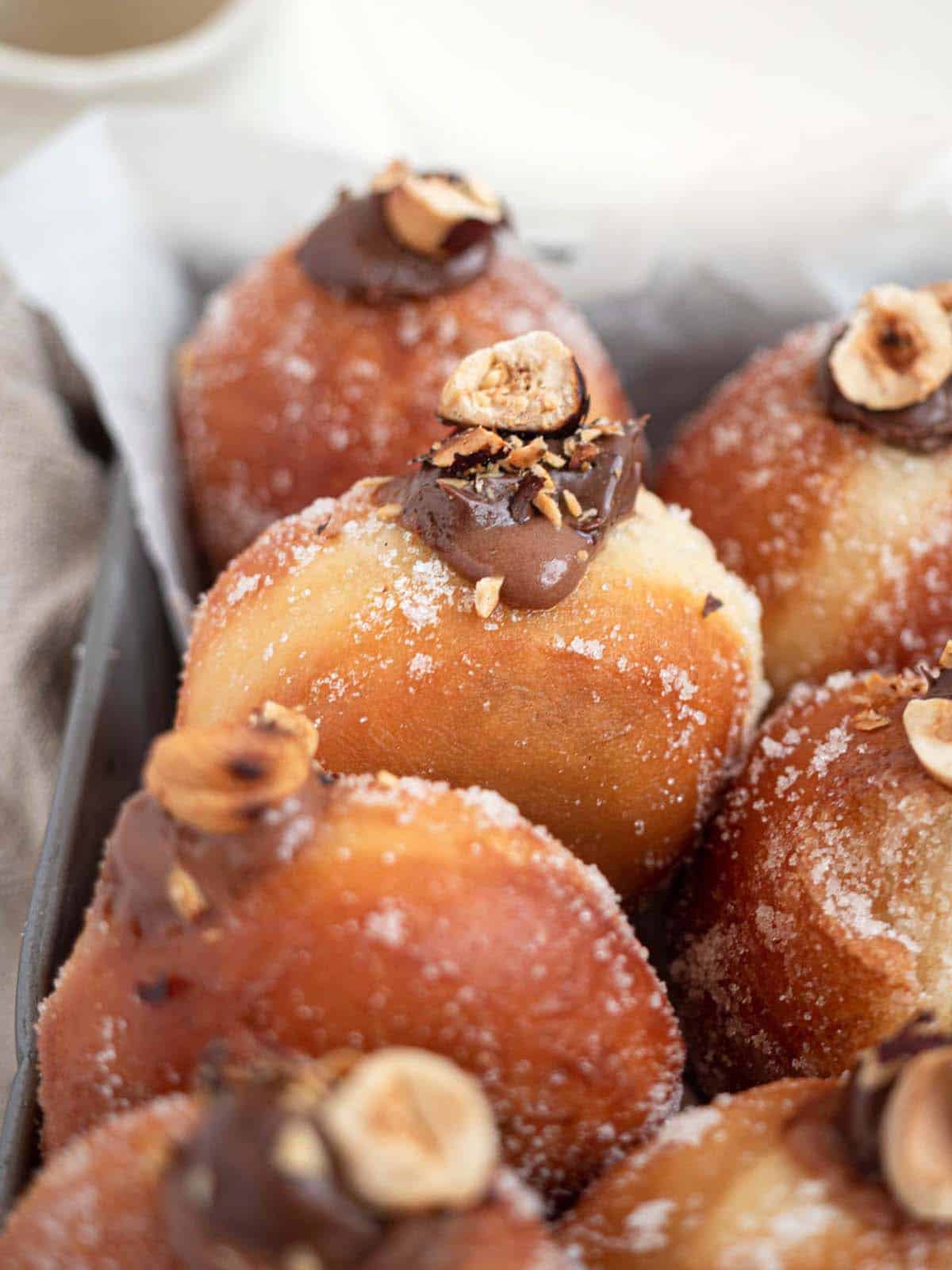
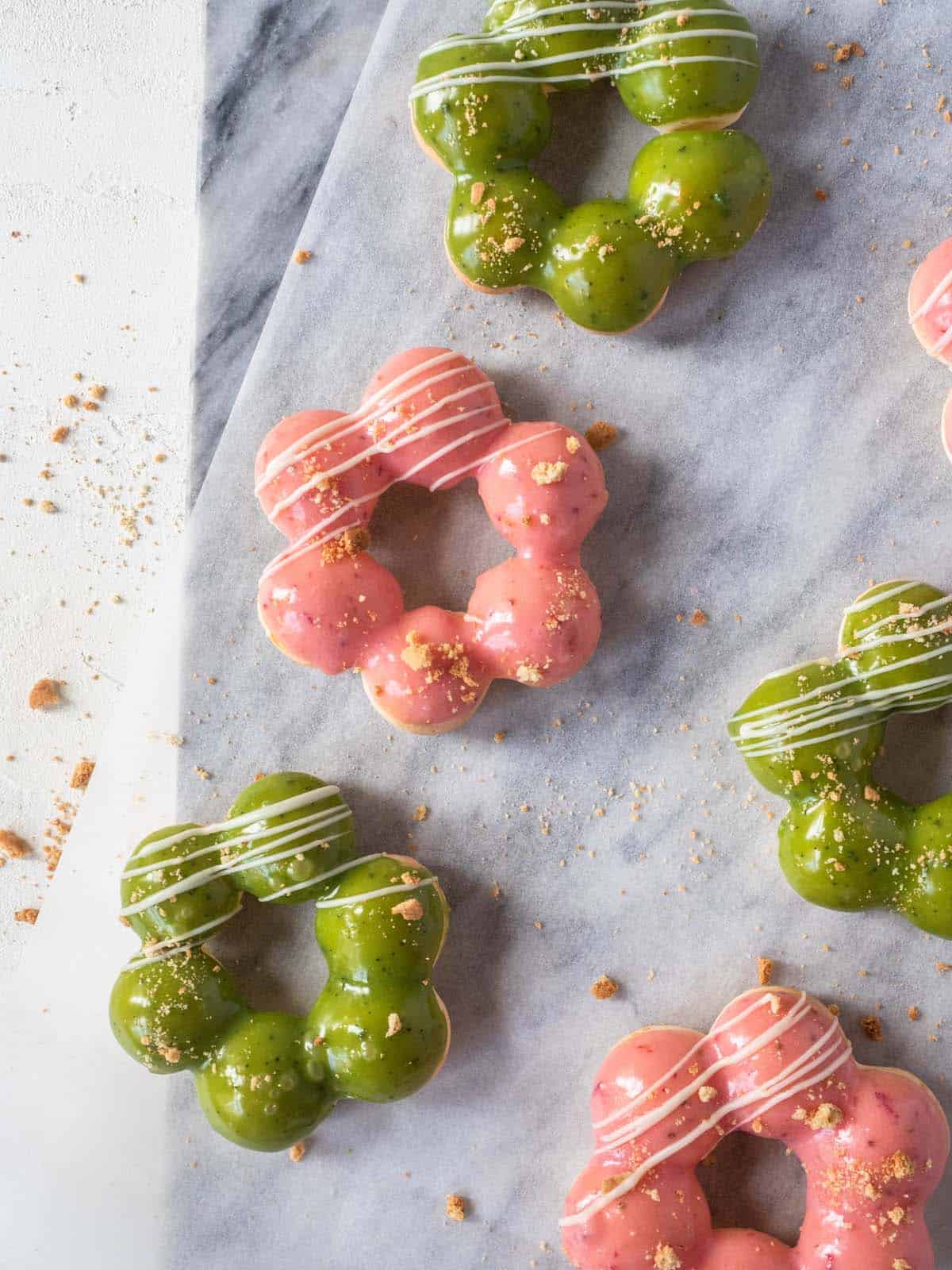
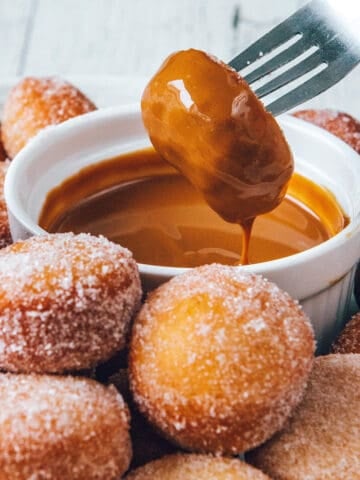
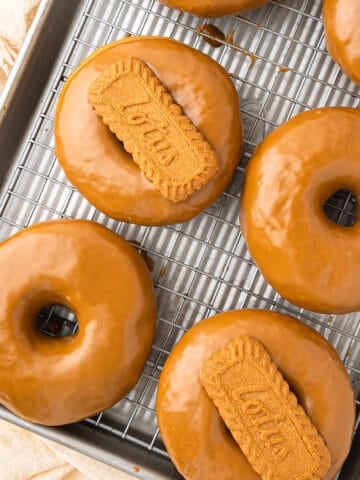
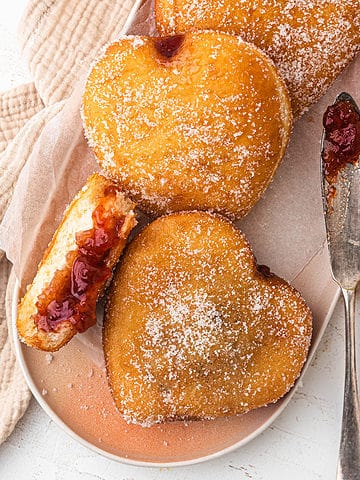

Comments
No Comments